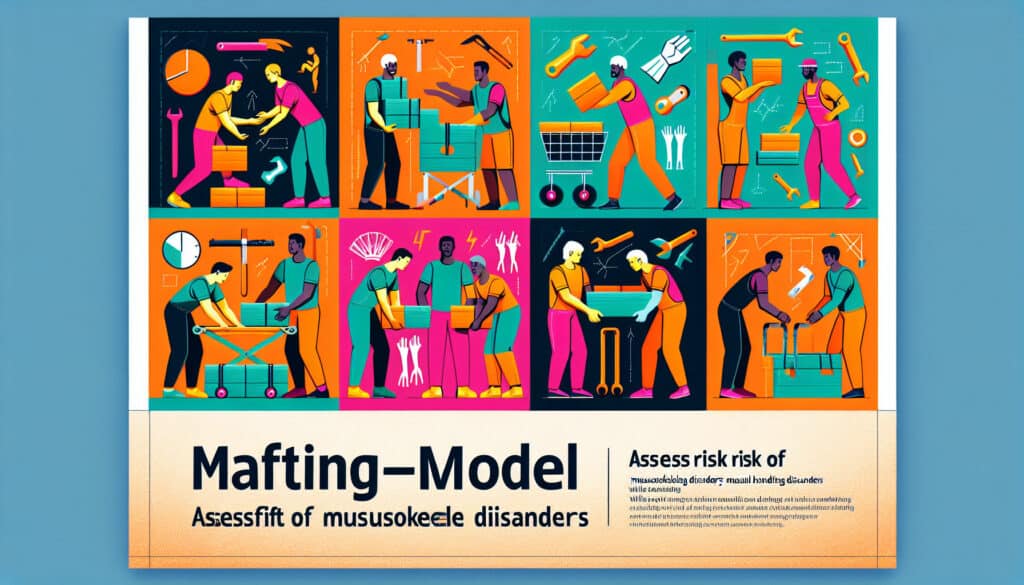Ein Modell zur Bewertung des Risikos von Muskel-Skelett-Erkrankungen im Zusammenhang mit manuellen Tätigkeiten.
- Methodologien: Maschinenbau, Qualität
Heben-Bewegen-Modell (LMM)

Heben-Bewegen-Modell (LMM)
- Kontinuierliche Verbesserung, Design für die Fertigung (DfM), Ergonomie, Menschliche Faktoren, Human Factors Engineering (HFE), Prozessverbesserung, Risikoanalyse, Risikomanagement, Sicherheit
Zielsetzung:
Wie es verwendet wird:
- A model that is used to assess the risk of musculoskeletal disorders associated with lifting and moving tasks. It takes into account a number of factors, such as the weight of the object, the distance it is moved, and the posture of the worker.
Vorteile
- Provides a quantitative measure of risk; Can be used to compare the risk of different tasks.
Nachteile
- Can be complex to use and may require specialized software; May not be as accurate as a full ergonomic assessment.
Kategorien:
- Ergonomie, Risikomanagement
Am besten geeignet für:
- Assessing the risk of lifting and moving tasks to prioritize for further ergonomic assessment.
The Lifting-Moving-Model (LMM) methodology serves as a valuable tool for industries where manual handling of objects is prevalent, such as warehousing, construction, healthcare, and manufacturing. It is particularly beneficial during the design and assessment phases of task workflows, where ergonomic evaluations can significantly influence modifications that enhance worker safety and productivity. Participants in this process may include ergonomists, safety engineers, production managers, and occupational health specialists who collectively analyze lifting and moving tasks to identify risks associated with musculoskeletal disorders. The methodology encourages data collection on various factors, including load weight, duration of task exposure, and worker posture, enabling quantitative risk assessments that allow organizations to prioritize interventions effectively. LMM can be applied not only for evaluating existing tasks but also when designing new operations or workstations, ensuring that ergonomics is integrated from the beginning of the design process. This results in lowered injury rates, improved compliance with safety regulations, and can lead to potential cost savings by reducing workers’ compensation claims and increasing overall efficiency. Industries adopting LMM can benefit from its comparative risk analysis capabilities, allowing them to evaluate and improve the ergonomics of multiple tasks systematically.
Die wichtigsten Schritte dieser Methodik
- Identify and define the lifting and moving tasks to be assessed.
- Determine the weight of the object being lifted or moved.
- Measure the horizontal and vertical distance of the lift or move.
- Assess the posture of the worker during the task, noting angles of joints.
- Evaluate the frequency and duration of the lifting or moving task.
- Calculate the Lifting-Moving-Model risk score using established formulas.
- Rank tasks based on the calculated risk scores for prioritization.
Profi-Tipps
- Incorporate real-time monitoring technologies, such as tragbar sensors, to capture dynamic data on lifting mechanics and worker postures, enhancing the precision of LMM applications.
- Perform sensitivity analyses using LMM to identify which variables exert the most influence on risk outcomes and target those for ergonomic interventions effectively.
- Leverage comparative risk assessment by applying LMM to historical task data, enabling prioritization of high-risk tasks for redesign or training interventions.
Verschiedene Methoden lesen und vergleichen, Wir empfehlen die
> Umfassendes Methoden-Repository <
zusammen mit den über 400 anderen Methoden.
Ihre Kommentare zu dieser Methodik oder zusätzliche Informationen sind willkommen auf der Kommentarbereich unten ↓ , sowie alle ingenieursbezogenen Ideen oder Links.
Historischer Kontext
1986
(wenn das Datum nicht bekannt oder nicht relevant ist, z. B. "Strömungsmechanik", wird eine gerundete Schätzung des bemerkenswerten Erscheinens angegeben)

Verwandte Artikel
Monte-Carlo-Simulation
Modellbasiertes Testen
Modellprüfung
Forschung mit gemischten Methoden
Fehlervermeidung (Poka-Yoke)
Prüfung des Missionsprofils